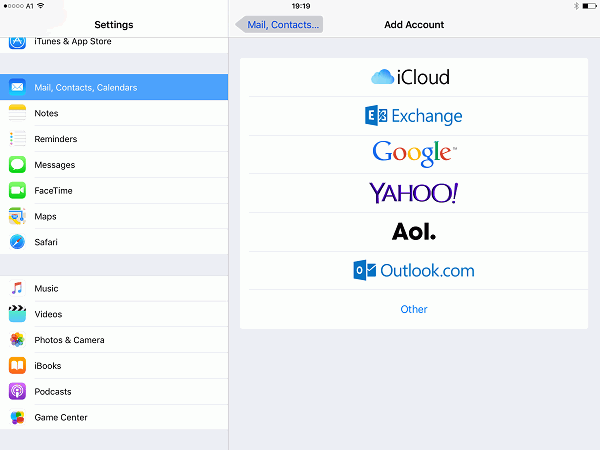5 Innovative Ways To Use Technology in Education
The coronavirus pandemic made people think about various methods of using technology in each and every aspect of life. Education is among the things that are in dire need of cutting edge technology. Relying on novel inventions, people consistently implement new ways of schooling, consequently improving instructors’ teaching methods and increasing students’ efficiency and productivity. As a result, the recent research showcased that in students’ Google search systems, phrases do my programming homework for me, and educational podcasts, for instance, go hand in hand. Read on to acknowledge the best ways to use technology for educational purposes.

Podcasts
Not only can podcasts be supplements for lessons, but also they can engage the audience, acting as a learning station. Indubitably, podcasts are not the invention of 2020; however, a few, if any, educational institutions deploy podcasts in their curricula. Besides, it is widely agreed and proved by numerous research that students can’t stand sitting in one place for a long time because their concentration evaporates after 20 minutes, which helps podcasts supersede some classes.
One may say that you can’t control whether students listen to the podcasts carefully, thus memorizing the material. Indeed, it is hard to check, but even by being passive and only listening, the speakers may somehow engage listeners by asking diverse questions and, for example, sending answers to these questions via email.
Aiming to stagger listeners and to nudge them to pay attention to the audio, educators through podcasts may comprise interviews with the author of a book students are reading, some on spot questions related to the syllabus, described from a different angle, and so forth. Student’s radio is not a new thing, but we know that a plethora of people don't feel comfortable when exposed, interacting with one another in real life, so the authorities are highly encouraged to motivate students to record their podcasts and spread/post them on the school’s website.
Video Content
Another option can be creating video content on famous online courses platforms or YouTube. Video can’t be underestimated nowadays, people tend to ask YouTube anything they wish to know even more often than they search in Google. Before wondering why, you need to understand that people can surf endlessly in video content, especially if they are fond of a particular blogger or a professional.
People are not watching videos only for fun, they want to learn something new, to make their life easier or even to get a cool job. To satisfy these wishes YouTube has millions of channels in countless fields. It’s a really progressive niche where any student could learn something new instead of wasting their time. Teachers could make it more productive and make video courses, important lessons or presentations to be available online.
Adaptive Content
Considering the fact that the most used device among students is a smartphone, it would be reasonable to convert some of the material to the format smartphones support. Smartphones are used for academic purposes when graduates can’t reach their laptop or tablet.
Usually, this happens on the road to school, after a hectic day, when the only thing one wants is just to lie on the bed. For such recurrences, adaptive content will be a splendid opportunity to revise the material, to read an article, or to complete a quiz. The pivotal thing the school has to implement is just the app that is compatible with the students’ gadgets. It might seem difficult for teachers at first glance, but once they learn the ropes, they will be able to launch virtual classrooms, construct assignments, and run reports at the drop of a hat.
Online Calendar
It goes without saying that students are prone to forget some home assignments, events, and gatherings, which doesn’t necessarily mean that they are lazy or irresponsible. Not only do they struggle with the absence of home tasks, but they also create a chain reaction where they also struggle with those who wrote down the assignment and are being continuously asked about it. Therefore, to keep students informed regarding the material they will be asked, creating an online class calendar will be a great feature, which will give a clear picture of what to do, how to do it, and the due date of the assignment.
No need to invent the bicycle and think of any ostentatious apps. Google Calendar is a straightforward, yet amazing and functional application, where the teacher can fill in crucial pieces of information, sending the calendar’s hyperlink to the students’ group mail, separately, or their parents. The closest due dates will notify learners, which indubitably will make them more self-disciplined and ensure that they won’t miss any homework they were assigned.
10 Minutes for Twitter?
Regardless of the subject, each class has to be summarized in order to establish what new in terms of the material learners have acquired. Twitter is an astounding application for this purpose because, in 140 characters or less, pupils can encapsulate the most significant information they acknowledged during the class. The point of this summary is to evaluate students’ different takes on one subject, from what angle each of them sees it. Giving 10 minutes at the end of each class to write a summary will help students fix the material. Certainly, such summaries can’t have an impact on the overall assessment of the learner, and under no circumstances should they be included while grading the student at the end of the semester or year.
Conversely, they help the teacher understand what should be completely changed in terms of learning, and what part of the technique has to remain or to be improved. In order to make such recapitulations more or less hidden from the users outside the class, think of some creative and hard-to-follow hashtag, clicking on which you will be able to analyze the aforementioned rundowns.
Finally Critical Thinking
Last but not least, developing critical thinking during traditional classes has always seemed to be rather a far-fetched scenario than a real milestone of education. Utilizing technologies, you can drastically help learners advance their critical thinking in your area of expertise. That said, find some web pages with content tightly connected with your lessons, and ask students to make some analysis regarding its credibility, jotting down some notes, which they will present afterward. The point is to make them less gullible, more analytical, and independent. Some programs let you make interactive screenshots of any page by adding its URL.
Moreover, this activity will exhilarate the group during the collective as well as individual presenting of the research conducted. Or, dividing the class into several groups, compare the edits in order to see which one examined the webpage the most thorough, pointing out either the pros or cons of the presented material. You can even implement the above-mentioned tip regarding Twitter synopsis to make sure whether pupils agreed or disagreed with what they heard and saw.
























Well the latest trend during the pandemic is Education on apps